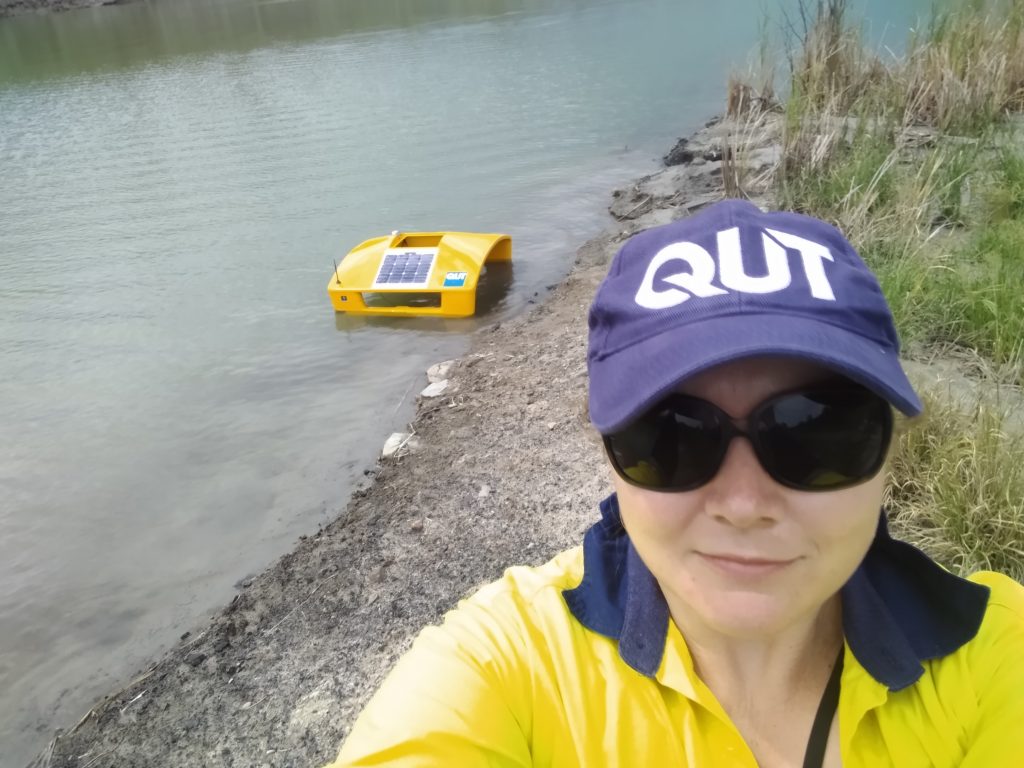QUT Associate Professor Sara Couperthwaite leads a research team that has developed an innovative way to improve environmental monitoring using a robotic boat. In doing so, they can overcome traditional barriers such as access and delayed turnaround times for water quality analysis.
In December 2020, the QUT research team launched their autonomous boat in Lanes Pit – the deepest water body at the proposed Wanless Recycling Park’s Ebenezer site. They collected the first data they need to start developing the sampling regime required for their next visit. The robotic boat fits on the back of a ute. It can collect water samples from any location on a waterbody and at any depth. It also carries an analysis system, which provides real-time information on key water quality characteristics at the collection point. This means researchers can tailor the sampling regime of a site to track contaminants, and they can generate 3D representations of the water quality at a particular site.

With an improved understanding of the water quality of the water bodies, Wanless can develop water sustainability strategies for the Ebenezer site. They can also use the research findings to prepare for potential future events (e.g. overflows caused by flooding). Dr Couperthwaite (pictured) explained the QUT research team will demonstrate, for the first time, the full capabilities of its new robotic boat at the site.
“We’ve tested the individual parts in isolation before, but this is our chance to test-drive the integrated unit. We’ll conduct a full survey of the Lanes Pit waterbody using sonar to generate its 3D map. We’ll also collect water samples in key locations. Then we’ll apply QUT-developed algorithms to generate a sampling regime and a pathway for real-time analysis that best represents the waterbody,” Dr Couperthwaite said.
